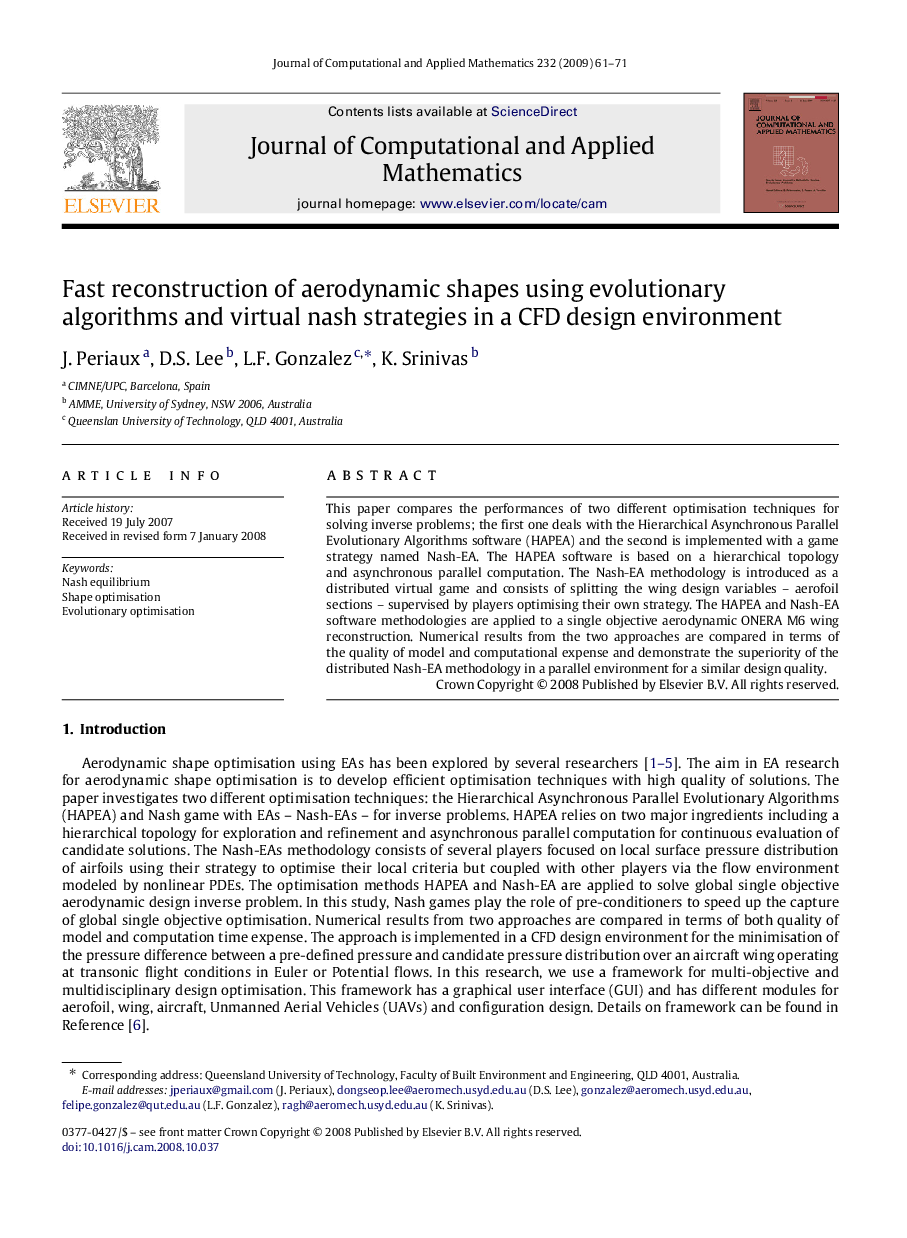| Article ID | Journal | Published Year | Pages | File Type |
|---|---|---|---|---|
| 4642006 | Journal of Computational and Applied Mathematics | 2009 | 11 Pages |
This paper compares the performances of two different optimisation techniques for solving inverse problems; the first one deals with the Hierarchical Asynchronous Parallel Evolutionary Algorithms software (HAPEA) and the second is implemented with a game strategy named Nash-EA. The HAPEA software is based on a hierarchical topology and asynchronous parallel computation. The Nash-EA methodology is introduced as a distributed virtual game and consists of splitting the wing design variables–aerofoil sections–supervised by players optimising their own strategy. The HAPEA and Nash-EA software methodologies are applied to a single objective aerodynamic ONERA M6 wing reconstruction. Numerical results from the two approaches are compared in terms of the quality of model and computational expense and demonstrate the superiority of the distributed Nash-EA methodology in a parallel environment for a similar design quality.
